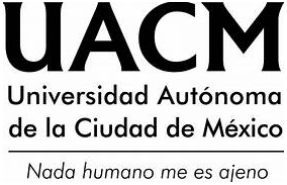Natural Born Killers: A Reading Archetype of Violence in Movies
DOI:
https://doi.org/10.29092/uacm.v10i22.276Keywords:
Postmodernity, Violence, Aggression, Cinema, Oliver StoneAbstract
The article confronts the problem of violence departing from the answers given by contemporary society: Utilizing Oliver Stone’s film, paradigmatic in the treatment of the aggression and the violence. The author analyses the subject, tests the answers to topics ranging from the mediatic treatment and the trivialitation to the point of becoming critic to the power. The research exhibits a recount of causes that justifies the treatment of violence as a filmic criticism of the postmodern perception of the reality: Before the spirit, science and truth crisis.
Downloads
References
Abbagnano, N. (1974), Diccionario de filosofía. México: Fondo de Cultura Económica.
Archer, J. et al. (1994), Male Violence. Londres: Routledge.
Bandura, A. (1965), “Influence of Models Reinforcement on the Acquisition of Imitative Responses”, en Journal of Personality and Social Psychology, núm. I, pp. 73-95.
Baudrillard, J. (1978), Cultura y simulacro. Barcelona: Cairós.
_____ (1991), Las estrategias fatales. Barcelona: Anagrama.
_____ (2000), Pantalla total. Barcelona: Anagrama.
Benjamin, W. (1998), “Para una crítica de la violencia y otros ensayos”, en Iluminaciones IV. Madrid: Taurus, pp. 85-135.
Caparrós, J. (1999), El cine de nuestros días (1994-1998). Madrid: Rialp.
Cauchy, V. (1992), “Modern Societies and Innate Violence”, en International Social Science Journal, núm. 132, pp. 172-191.
Corsi, J. (1996), Violencia familiar: Una mirada interdisciplinaria sobre un grave problema social. Buenos Aires: Paidós.
Fromm, E. (1987), Anatomía de la destructividad humana. México: Siglo XXI.
Gilligan, J. (1997), Violence: Reflections on a National Epidemic. Nueva York: Random House Inc.
Goméz de Silva, G. (1988), Breve diccionario etimológico de la lengua española. México: Fondo de Cultura Económica.
Gruner, E. (1997), Las formas de la espada. Miserias de la política de la violencia. Buenos Aires: Colihue.
Habermas, J. (1988), “Modernidad versus postmodernidad”, en Joseph Picó et al., Modernidad y postmodernidad. Madrid: Alianza, pp.70-89.
Harvey, H. (1990), La condición de la posmodernidad. Investigación sobre los orígenes del cambio cultural. Oxford: Basil Blackwell.
Imbert, G. (1992), Los escenarios de la violencia. Barcelona: Icaria.
Jameson, F. (1996), Teoría de la postmodernidad. Madrid: Trotta.
Kumar, K. (1996), From Post-industrial to Postmodern Society. New Teories of the Contemporary World. Oxford: Blackwell Publisher.
Lipovestky, G. (1986), La era del vacío. Barcelona: Anagrama.
Litke, R. (1992), “Violencia y poder”, en International Social Science Journal, núm. 132, pp. 165-168.
Lyotard, J. (1989), La postmodernidad (explicada a los niños). México:Siglo XXI.
_____ (1992), “Qué era la posmodernidad”, en Nicolás Casullo (comp.), El debate modernidad-posmodernidad. Buenos Aires: El Cielo por Asalto, pp. 70-123.
Mongin, O. (1998), Violencia y cine contemporáneo. Ensayo sobre ética e imagen. Buenos Aires: Paidós.
Montagne, E. (1994), “Odiar sin culpa: Una reflexión psicoanálitica sobre los afectos y su relación con la violencia”, en M. Lemlij, Reflexiones sobre la violencia. Lima: Biblioteca Peruana de Psicoanálisis, pp. 138-162.
Mumford, L. (1989), “The Morals of Extermination”, en Seymour
Melman (ed.), No Place to Hide: Fallout Shelters-Fact and Fiction. Nueva York: Grove Press, pp. 175-205.
Orr, J. (1993), Cinema and Modernity. Cambridge: Polity Press.
Raulet, G. (1991), “De la modernidad como calle de dirección única a la postmodernidad como callejón sin salida”, en Joseph Picó et al., Modernidad y postmodernidad. Madrid: Alianza, pp. 310-336.
Real Academia Española (1992), Diccionario de la lengua española, 21ª ed. Madrid: Espasa.
Riambau, E. (1994), “Oliver Stone”, en Dirigido por..., núm. 228. México, octubre, pp. 18-30.
Sartori, G. (1998), Homo videns. La sociedad teledirigida. Madrid: Taurus.
Sharrett, C. (1993), “Introduction: Crisis Cinema”, en Christopher Sharret (ed.), Crisis Cinema. The Apocalyptic Idea in Postmodern Narrative Film. Washington: Maisonneuve Press, pp. 2-14.
Solano, M. (2005), “Capitalismo y violencia”. Artículo en línea disponible en http://redalyc.uaemex.mx/redalyc/pdf/666/66661110.pdf, 17 de diciembre de 2008.
Stam, R. et al. (1999), Nuevos conceptos de la teoría del cine. Estructuralismo, semiótica, narratología, psicoanálisis, intertextualidad. Barcelona: Paidós.
Turner, A. (1994), “Genetic and Hormonal Influences on Male Violence”, en J. Archer, Male Violence. Londres: Routledge, pp. 224:234.
Vatimo, G. et. al. (1994), En torno a la postmodernidad. Barcelona: Anthropos.
Published
Issue
Section
License
This Journal is licensed under Creative Commons Mexico 2.5. It is allowed to reproduce and disseminate the contents of the Journal for educational or research purposes, not for profit, as long as they are not mutilated and cite the source (Andamios, Revista de Investigación Social) and the author.
The copyright of the articles published in Andamios, Revista de Investigación Social are transferred by the author(s) to Universidad Autónoma de la Ciudad de México when the originals have been accepted, so that they are published and distributed both in the printed and electronic versions of the Journal. However, as established by law, the author(s) retains their moral rights. The author(s) will receive a form of assignment of copyright that they must to sign when their original has been accepted. In the case of collective articles, the signature of one of the authors will suffice, provided that the latter has obtained the consent of the others.
Authors may use the material of their article in other works or books published by themselves, with the condition of quoting Andamios as the original source of the texts.
The articles contained in this publication are the responsibility of their authors and do not compromise the official position of Andamios, Revista de Investigación Social of the Universidad Autónoma de la Ciudad de México.


